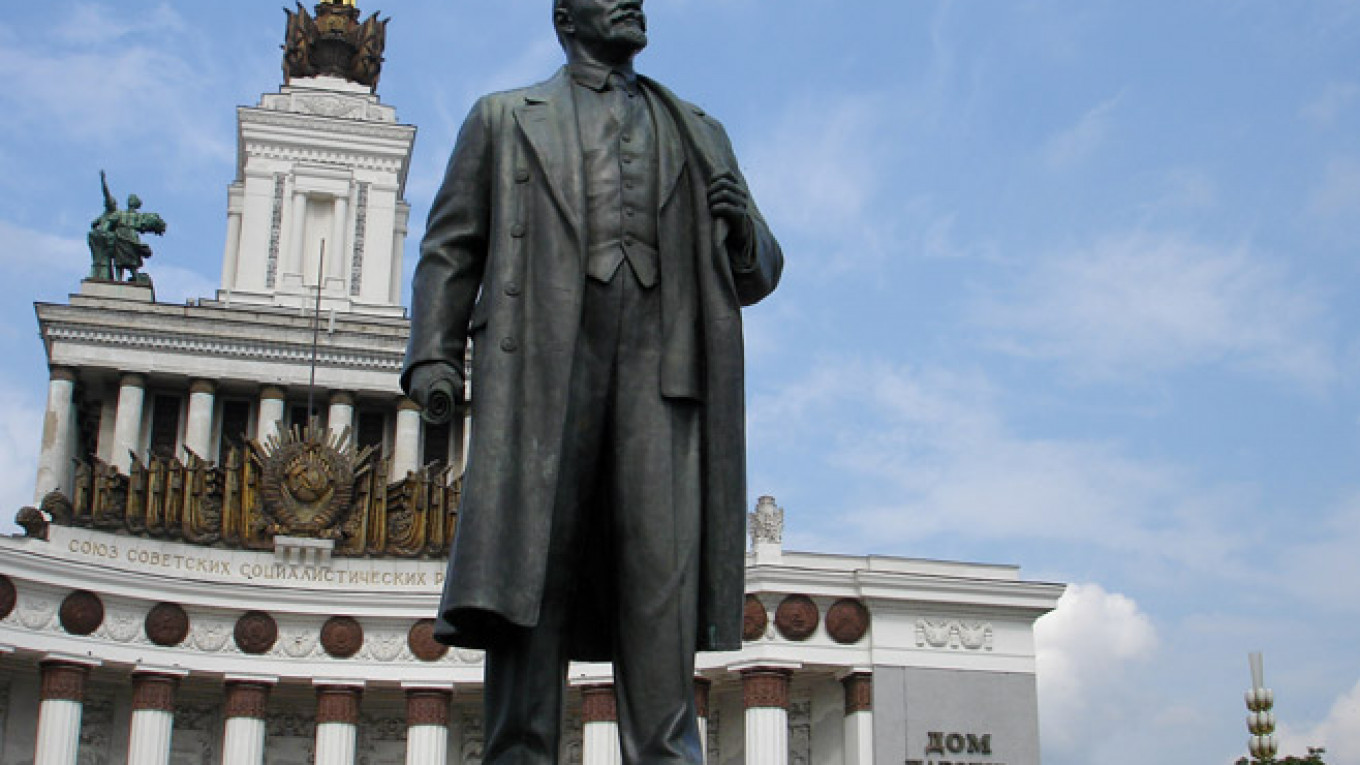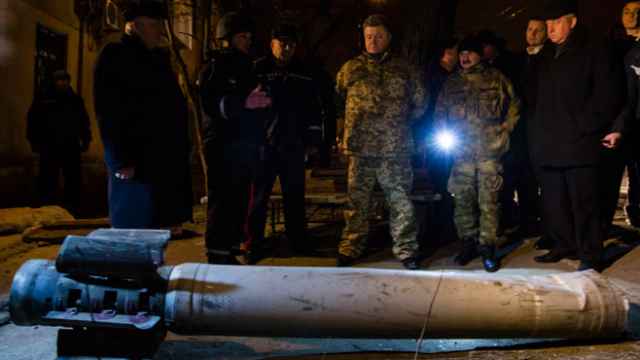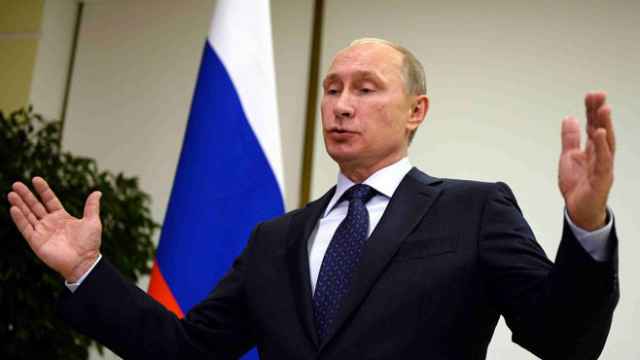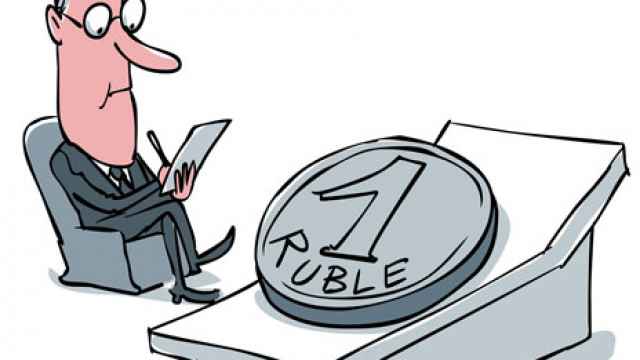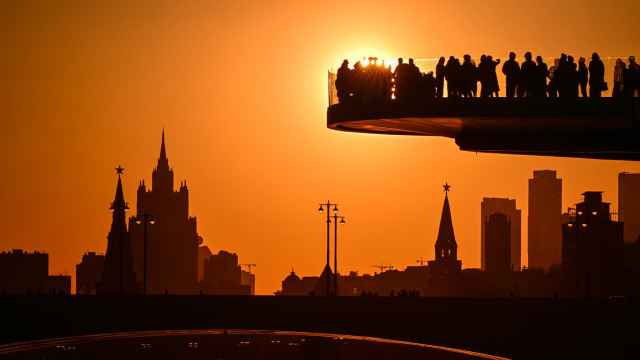Today marks the 145th anniversary of Vladimir Lenin's birth. In an era that has witnessed the resurrection and rehabilitation of many Soviet symbols, it is worth devoting a moment to ponder Lenin's legacy across the lands that he once ruled.
It is a complicated legacy, one that would require volumes to fully assess. Lacking such space on this page, I'll limit my reflections on Lenin to the symbols themselves: the monuments to him that still dot much of the post-Soviet landscape.
I will confess that I'm always a bit saddened when I read that another Lenin statue has been toppled in the former Soviet Union, as has happened frequently since Ukraine was gripped by political turmoil in 2013. In fact, the phenomenon has become so widespread that it has entered the Russian lexicon as ''Leninopad'' (Lenin-fall).
The package of "de-communization" laws passed this month by the Ukrainian parliament banning Nazi and Communist symbols from Ukraine's past promises to accelerate the Leninopad phenomenon as the elimination of Soviet monuments becomes official state policy.
High-profile incidents like the destruction of Kiev's red granite statue in December 2013 and the September 2014 toppling and subsequent disfigurement of the statue in Kharkiv appear to have been a spontaneous mass protest action taken in opposition to Russia's actions toward Ukraine.
In Kharkiv's case, Lenin's nose was ceremoniously cut off to spite another Vladimir's face. Yet these and other instances of Leninopad also offer a window into the complex legacy of Lenin and Soviet rule in Ukraine and elsewhere.
See also: Lenin's Life in Pictures
Regardless of how one assesses Soviet communism and its legacy, it is hard not to marvel at Josef Stalin's shrewd strategy after Lenin's death of engineering the latter's ascension to godlike status as a means of political control.
It was no accident that the cult of Lenin took on characteristics reminiscent of Russian Orthodoxy. The importance of relics (as displayed in Lenin's mausoleum), the omnipresence of shrines (monuments spread far and wide), and the continued tradition of the "red corner" in houses (wherein Orthodox icons were conveniently replaced by images of Lenin) are all striking parallels between Orthodoxy and the cult of Lenin.
Crucially, by anointing himself "high priest" of this new earthly religion, Stalin ensured that he alone was positioned to interpret the divine words of the "father." Thus, the cult of Lenin possessed dual mechanisms for Stalin's political control: it allowed Stalin to use Lenin's legacy as a weapon against his political enemies while also indoctrinating the masses.
Though the cult's potency as a means of political manipulation would fade after Stalin's death, for much of Soviet history it remained a cornerstone of the regime's strategy to legitimize itself.
As such, the remnants of the cult of Lenin serve as powerful reminders of some of the darkest aspects of the Soviet era. Just as the Kaiser Wilhelm Memorial Church in Berlin has been left in its ruined state as a constant reminder of the destructive violence of World War II, so too have I long believed that Soviet monuments should be preserved to remind the world of the 20th century's other great humanitarian catastrophe: communist rule.
However, unlike the legacy of World War II in Germany, there is no consensus in Russia, Ukraine and many other post-Soviet countries regarding the legacy of Soviet rule.
For some, statues of Lenin represent a bloody past of oppression and occupation. For others, they represent the apogee of Russian power, a golden age when the Soviet Union commanded fear, if not respect. A map plotting the locations of fallen Lenin monuments in the last year illustrates Lenin's bifurcated legacy in Ukraine. No statues have been torn down in western Ukraine, as they were dismantled years ago in the cradle of Ukrainian nationalism.
Similarly, few statues (Kharkiv's being a notable exception) have been destroyed in eastern Ukraine, where many still see Lenin and the Soviet legacy in a positive light. Rather, the vast majority of Lenin topplings have taken place in central Ukraine where there was less consensus on Lenin's legacy than there was in the west or the east.
While residents of central Ukraine were content to live under Lenin's gaze for much of the last two decades, the current conflict with Russia has tipped the population against these bronze and granite symbols of Russian aggression and so tipped the statues from their pedestals.
For some populations, such as those in western Ukraine and the Baltic states, Soviet monuments are symbols of violence, destruction, starvation and foreign occupation. Do these populations — many of whom still remember the bloody Sovietization of their lands after they were incorporated into the Soviet Union — really need Soviet monuments to remind them of the tremendous cost of communist rule? Probably not.
For other populations across the former Soviet Union that wistfully long for that "golden age" when the world trembled at Soviet power, such monuments stand not as warnings to "never forget" a painful and destructive period of their history. Rather, they serve as focal points for those who wish to restore that bygone greatness and glory while glossing over the darkest aspects of Soviet history.
This complicated reality — that Soviet monuments convey vastly different meanings to different populations — is not limited to statues of Lenin, either. Even the memorials to the Soviet soldiers who perished in World War II hold multiple meanings. For many, they symbolize the incredible sacrifices borne by the Soviet soldiers who fought to liberate their country and Europe from Nazi occupation.
But for others, particularly in the Baltic states and Eastern Europe, Soviet war memorials also serve as painful reminders of the subsequent decades of direct and indirect Soviet occupation. While these countries have a moral duty to memorialize their citizens' sacrifices during the war, must they do so with the monuments left behind by what they see as an oppressive occupying force?
As sovereign nations, should they not be able to determine for themselves how to remember their history without the constant threat of igniting a diplomatic firestorm with Russia if they choose to replace Soviet memorials with indigenous ones?
And so, for as long as Soviet monuments stand they will convey a complex message to those who live in their shadows: for some they will bring pain, for others they will bring longing and pride, and for yet others they will bring remembrance of the destructive capacity of ideology wedded with power.
But for all, they should serve as a reminder that Russia and many of its fellow post-Soviet countries have yet to — and may never — fully come to terms with their Soviet past. This, no doubt, is a lesson worth remembering.
Robert Person is assistant professor of international relations and comparative politics at the United States Military Academy at West Point. The views expressed in this article are those of the author and do not reflect the official policy or position of the U.S. Department of the Army, Department of Defense or the U.S. government.
A Message from The Moscow Times:
Dear readers,
We are facing unprecedented challenges. Russia's Prosecutor General's Office has designated The Moscow Times as an "undesirable" organization, criminalizing our work and putting our staff at risk of prosecution. This follows our earlier unjust labeling as a "foreign agent."
These actions are direct attempts to silence independent journalism in Russia. The authorities claim our work "discredits the decisions of the Russian leadership." We see things differently: we strive to provide accurate, unbiased reporting on Russia.
We, the journalists of The Moscow Times, refuse to be silenced. But to continue our work, we need your help.
Your support, no matter how small, makes a world of difference. If you can, please support us monthly starting from just $2. It's quick to set up, and every contribution makes a significant impact.
By supporting The Moscow Times, you're defending open, independent journalism in the face of repression. Thank you for standing with us.
Remind me later.


